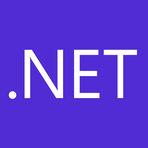The Power of Go: Crafting User Interfaces and Concurrency
December 25, 2024, 4:54 am
Go, a language born from the need for simplicity and efficiency, has carved its niche in the programming world. It’s like a Swiss Army knife for developers, offering tools for both backend and frontend development. This article explores two significant aspects of Go: creating user interfaces (UI) and leveraging concurrency through goroutines and channels.
Traditionally, user interfaces have been the realm of frontend languages like JavaScript. However, Go is breaking this mold. Imagine building a bridge between backend logic and user interaction. That’s what Go aims to achieve with its UI capabilities.
The landscape of UI development in Go is diverse. Developers can choose from various frameworks like GopherJS, gomobile, and bindings for Qt and GTK. Each offers unique features, but the goal remains the same: create a seamless user experience across platforms.
Why is UI important? It’s the face of your application. It’s how users interact with your software. A well-designed UI can transform a complex backend into an intuitive experience. Go allows developers to create UIs that respond to user input, whether through command-line parameters, HTTP requests, or graphical interfaces.
The rise of full-stack development has blurred the lines between frontend and backend. Full-stack developers wield the power of both worlds, and Go is a perfect companion. With the advent of frameworks like Gio, developers can create modern, responsive applications that run on desktops, mobile devices, and the web.
Gio, in particular, employs an immediate mode graphics approach. This means developers can draw directly onto the screen, creating dynamic interfaces that respond instantly to user actions. It’s like painting on a canvas, where every stroke reflects the user’s input.
Consider a trading application. With Go, developers can build a UI that displays real-time market data, allows users to place orders, and interacts with an AI assistant. The possibilities are endless. The key is to harness Go’s capabilities to create a cohesive experience that bridges the gap between user intent and application response.
While Go excels in UI development, its true strength lies in concurrency. Goroutines and channels are the backbone of Go’s approach to handling multiple tasks simultaneously. Think of goroutines as tiny workers in a factory, each handling a specific task without stepping on each other’s toes.
Goroutines are lightweight threads managed by the Go runtime. They start with a small stack size, growing as needed. This efficiency allows developers to spawn hundreds of thousands of goroutines without overwhelming system resources. It’s like having a vast army of ants, each carrying a grain of sand, working together to build a massive structure.
Channels are the communication lines between these goroutines. They ensure safe data exchange, preventing race conditions that can lead to unpredictable behavior. Imagine channels as postal services, delivering messages between workers without interference.
The beauty of Go’s concurrency model lies in its simplicity. Developers can create complex systems with minimal code. For instance, a producer-consumer scenario can be elegantly implemented using goroutines and channels. The producer generates data, sending it through a channel, while the consumer processes it. This clear separation of tasks enhances readability and maintainability.
Consider a scenario where a program needs to fetch data from multiple sources. With goroutines, each fetch operation can run concurrently, drastically reducing the overall execution time. It’s like a relay race, where each runner passes the baton to the next, speeding up the entire process.
The real magic happens when you combine Go’s UI capabilities with its concurrency model. Imagine a trading application where the UI updates in real-time as market data changes. Goroutines can handle data fetching, while channels ensure the UI reflects these changes without lag.
This synergy creates a responsive application that feels alive. Users can interact with the UI, place orders, and receive instant feedback. The backend processes run in the background, ensuring a smooth experience.
Developers can leverage frameworks like Gio to build these applications. With its immediate mode graphics, creating dynamic UIs becomes intuitive. Coupled with goroutines, developers can manage data flow seamlessly, making applications not just functional but also enjoyable to use.
Go is more than just a programming language; it’s a powerful tool for building modern applications. Its ability to create user interfaces and manage concurrency sets it apart. Developers can craft applications that are not only efficient but also user-friendly.
As the tech landscape evolves, Go stands ready to meet the challenges of modern development. Whether you’re building a complex trading platform or a simple utility, Go provides the tools to create responsive, concurrent applications. Embrace the power of Go, and watch your ideas come to life.
Creating User Interfaces with Go
Traditionally, user interfaces have been the realm of frontend languages like JavaScript. However, Go is breaking this mold. Imagine building a bridge between backend logic and user interaction. That’s what Go aims to achieve with its UI capabilities.
The landscape of UI development in Go is diverse. Developers can choose from various frameworks like GopherJS, gomobile, and bindings for Qt and GTK. Each offers unique features, but the goal remains the same: create a seamless user experience across platforms.
Why is UI important? It’s the face of your application. It’s how users interact with your software. A well-designed UI can transform a complex backend into an intuitive experience. Go allows developers to create UIs that respond to user input, whether through command-line parameters, HTTP requests, or graphical interfaces.
The rise of full-stack development has blurred the lines between frontend and backend. Full-stack developers wield the power of both worlds, and Go is a perfect companion. With the advent of frameworks like Gio, developers can create modern, responsive applications that run on desktops, mobile devices, and the web.
Gio, in particular, employs an immediate mode graphics approach. This means developers can draw directly onto the screen, creating dynamic interfaces that respond instantly to user actions. It’s like painting on a canvas, where every stroke reflects the user’s input.
Consider a trading application. With Go, developers can build a UI that displays real-time market data, allows users to place orders, and interacts with an AI assistant. The possibilities are endless. The key is to harness Go’s capabilities to create a cohesive experience that bridges the gap between user intent and application response.
Concurrency in Go: Goroutines and Channels
While Go excels in UI development, its true strength lies in concurrency. Goroutines and channels are the backbone of Go’s approach to handling multiple tasks simultaneously. Think of goroutines as tiny workers in a factory, each handling a specific task without stepping on each other’s toes.
Goroutines are lightweight threads managed by the Go runtime. They start with a small stack size, growing as needed. This efficiency allows developers to spawn hundreds of thousands of goroutines without overwhelming system resources. It’s like having a vast army of ants, each carrying a grain of sand, working together to build a massive structure.
Channels are the communication lines between these goroutines. They ensure safe data exchange, preventing race conditions that can lead to unpredictable behavior. Imagine channels as postal services, delivering messages between workers without interference.
The beauty of Go’s concurrency model lies in its simplicity. Developers can create complex systems with minimal code. For instance, a producer-consumer scenario can be elegantly implemented using goroutines and channels. The producer generates data, sending it through a channel, while the consumer processes it. This clear separation of tasks enhances readability and maintainability.
Consider a scenario where a program needs to fetch data from multiple sources. With goroutines, each fetch operation can run concurrently, drastically reducing the overall execution time. It’s like a relay race, where each runner passes the baton to the next, speeding up the entire process.
Combining UI and Concurrency
The real magic happens when you combine Go’s UI capabilities with its concurrency model. Imagine a trading application where the UI updates in real-time as market data changes. Goroutines can handle data fetching, while channels ensure the UI reflects these changes without lag.
This synergy creates a responsive application that feels alive. Users can interact with the UI, place orders, and receive instant feedback. The backend processes run in the background, ensuring a smooth experience.
Developers can leverage frameworks like Gio to build these applications. With its immediate mode graphics, creating dynamic UIs becomes intuitive. Coupled with goroutines, developers can manage data flow seamlessly, making applications not just functional but also enjoyable to use.
Conclusion
Go is more than just a programming language; it’s a powerful tool for building modern applications. Its ability to create user interfaces and manage concurrency sets it apart. Developers can craft applications that are not only efficient but also user-friendly.
As the tech landscape evolves, Go stands ready to meet the challenges of modern development. Whether you’re building a complex trading platform or a simple utility, Go provides the tools to create responsive, concurrent applications. Embrace the power of Go, and watch your ideas come to life.

